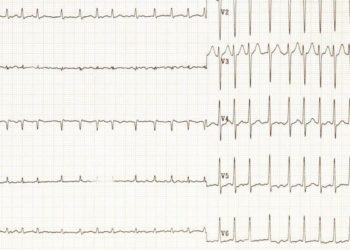Family history is the strongest risk factor for development of Parkinson disease
Image: PD
Key study points:
1. Family history was found to be the strongest risk factor associated with the development of Parkinson’s disease (Odds Ratio 3.23).
2. Other strongly associated risk factors include family history of tremor, history of constipation, and lack of smoking history.
Primer: Parkinson disease is a progressive neurodegenerative disorder of the central nervous system, more specifically, the dopaminergic neurons in the basal ganglia. It affects over one million Americans usually over the age of 40 with a mean age of diagnosis at 70. It is classically characterized by a constellation of physical exam findings including tremor, ridigity, bradykinesa, and postural instability. Early in the course of Parkinson disease, the most obvious signs are motor-related and include a resting tremor and bradykinesia. As the disease progresses, postural instability often becomes the most debilitating symptom. In the advanced stages of Parkinson disease, cognitive functions become impaired as many patients are later diagnosed with dementia which has been shown to be an independent predictor of mortality. Currently, there is no cure for Parkinson disease and often the diagnosis is delayed by many years. Also, there is no accurate way to predict who will be affected. In this article, the authors conducted a systematic review and meta-analysis in the attempt to identify Parkinson disease risk factors applicable to population-based screening.
Background reading:
1. Olanow CW, Tatton WG. Etiology and pathogenesis of Parkinson’s disease. Annu Rev Neurosci 1999;22: 123-44
2. Savica R, Rocca WA, Ahlskog JE. When does Parkinson disease start? Arch Neurol 2010;67: 798-801
This [systematic review and meta-analysis] study included 202 articles in the systematic review and 173 in the meta-analysis. The systematic review yielded 19 environmental, nonmotor, and genetic risk factors that could help identify patients who are at higher risk of developing Parkinson disease. The strongest association with the development of Parkinson disease was having a first-degree or any relative with Parkinson disease (OR 3.23 and 4.45, respectively). Other strong associations included tremor (OR, 2.74), mood disorder (OR, 1.9), and constipation (RR 2.34). Additionally, exposure to pesticides, head injury, rural living, use of beta-blockers, drinking well-water, and farming all showed a positive significant but mild association with the development of Parkinson disease. Some factors included in the meta-analysis actually showed a significant negative association with a diagnosis of Parkinson disease: smoking, coffee, and hypertension. A smoking history decreases the risk of Parkinson disease by approximately 36% and the effect was shown to be strongest in current smokers (as opposed to past smokers).
In sum: This systematic review and meta-analysis identified several early risk factors for Parkinson disease. The strongest association was shown to be a first-degree or any relative with Parkinson disease. Other strong associations included tremor, mood disorder, constipation, and lack of smoking history which each at least doubled the risk of later developing Parkinson disease. Some potentially protective factors were identified and include smoking, coffee, and hypertension. More importantly, this review has provided health care providers with the ability to screen their patient population and identify those at increased risk of Parkinson disease. It has shown the magnitude of the relationship of these risk factors, either positive or negative, in order to stratify risk and recognize early disease.
While this systematic review and meta-analysis yielded 19 risk factors that could possibly aid in identifying patients who are at increased risk of Parkinson disease, not all of them were as strongly associated as a positive family history. Given the limitations of a meta-analysis that pools a heterogenous group of studies with different criteria and measures, some of the less strongly but statistically significant risk factors could be further investigated in order to clearly delineate the risk association with them. Nonetheless, this represents the first comprehensive review and meta-analysis of the subject matter, and it identifies possible risk factors of Parkinson’s Disease that can be noted by primary care providers treating the general public.
Click to read the study in the Annals of Neurology
By [BH] and [RR]
© 2012 2minutemedicine.com. All rights reserved. No works may be reproduced without written consent from 2minutemedicine.com. DISCLAIMER: Posts are not medical advice and are not intended as such. Please see a healthcare professional if you seek medical advice.




